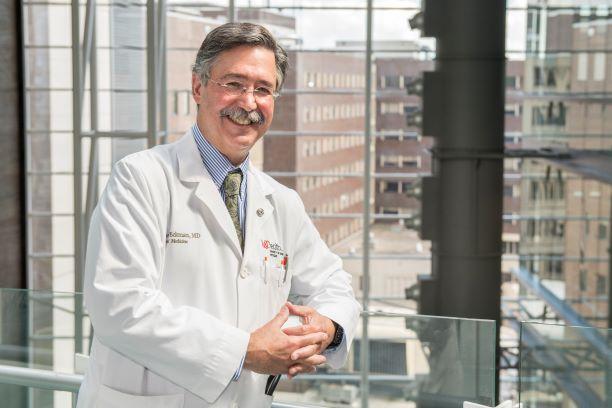University of Cincinnati researcher says it will help combat future health complications

Credit: Photo by Colleen Kelley/University of Cincinnati.
A University of Cincinnati researcher is recommending pediatric hospital emergency rooms consider screening for sexually transmitted infections (STI) teenage and young adult patients who visit for other acute care issues.
Mark Eckman, MD, professor and director of the UC Division of General Internal Medicine, conducted a computer analysis that simulated outcomes for screening pediatric emergency room patients ages 15-21 for sexually transmitted infections. It will add costs to hospital budgets but Eckman says it also helps combat future health complications of STIs for young people.
Using a hypothetical population that included 10,000 emergency room visits Eckman looked at a 3.6% prevalence of chlamydia and gonorrhea – the same amount generally found in the nation’s young adult population – and the impact of targeted screening, universal screening and no screening. Under the scenario 360 STI cases would be present.
Targeted screening resulted in the detection and successful treatment of 95 of 360 STI cases (26.4%) at a cost of $313,063 and universally offered screening identified and treated 112 of 360 STI cases at a cost of $515,503. If no screening were done, 76 of 360 cases (21.1%) would be found at a cost of $190,409.
The study’s results in its entirety were recently published in the Journal of American Medical Association Pediatrics.
“Untreated chlamydia or gonorrhea can in women lead to pelvic inflammatory disease and ectopic pregnancies because of scarring in the fallopian tubes, while men can face epididymitis,” says Eckman, also a UC Health physician. “Women and men could face infertility if these sexually transmitted infections are not treated.”
Nationally, adolescents and young adults represent 25% of the sexually active population, but comprise 50% of all diagnosed sexually transmitted infection cases. Of the 20 million new cases of sexually transmitted infections each year 10 million occur among adolescents and young adults.
###
Collaborators on this work include Jennifer Reed, MD, Cincinnati Children’s Hospital; Maria Trent, MD, Johns Hopkins Medical Center; Monika Goyal, MD, Children’s National Hospital and George Washington University in conjunction with the Pediatric Emergency Care Applied Research Network.
Disclosures: Dr. Eckman reported receiving grants from the National Institutes of Health National Institute of Child Health and Human Development (NICHD), the National Center for Advancing Translational Sciences, and Bristol-Myers Squibb during the conduct of the study. Dr Reed reported receiving grants from the NICHD during the conduct of the study.
Dr. Trent reported receiving grants from the NICHD during the conduct of the study, grants and nonfinancial support from Hologic Inc., nonfinancial support from SpeeDx LLC, and personal fees from Church & Dwight Inc. (Trojan Sexual Health Advisory Council) outside the submitted work. Dr Goyal reported receiving grants from the NICHD during the conduct of the study.
This study was funded in part by grant R01HD094213 from the NICHD (all authors), grant UL1TR001425 from the National Center for Advancing Translational Sciences (Dr. Eckman), and grant CV 185-764 from Bristol-Myers Squibb (Dr. Eckman).
Media Contact
Cedric Ricks
[email protected]
Related Journal Article
http://dx.




